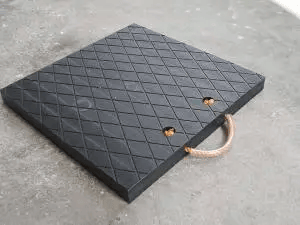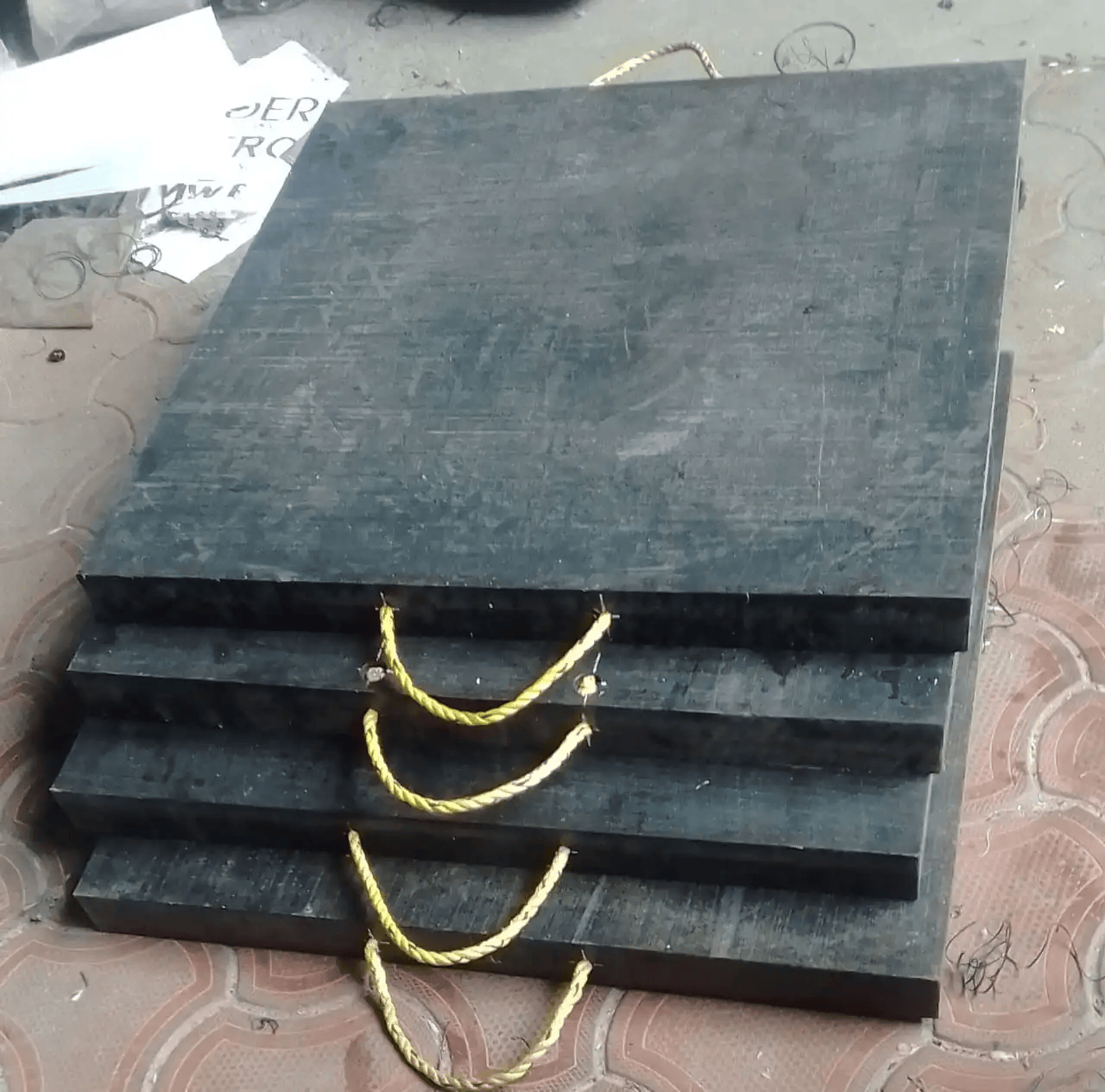OUTRIGGER PADS
UHMW PE (Ultra-High Molecular Weight Polyethylene) outrigger pads are increasingly popular in various industries for stabilizing heavy equipment. Here's a comprehensive overview of UHMW PE outrigger pads:
1. Applications:
- Mobile cranes.
- Aerial work platforms.
- Concrete pumps.
- Utility trucks.
- Emergency vehicles.
- Construction equipment.
2. Benefits of UHMW PE Outrigger Pads:
a) Strength and Durability:
- High compressive strength.
- Excellent impact resistance.
- Long service life.
b) Lightweight:
- Significantly lighter than steel or wood alternatives.
- Easier to handle and position.
c) Weather Resistance:
- Doesn’t absorb water or rot like wood.
- UV-stable (with appropriate additives).
- Performs well in extreme temperatures.
d) Chemical Resistance:
- Resistant to oils, solvents, and many chemicals.
e) Safety:
- Non-conductive, reducing electrical hazards.
- Can be made with high-visibility colors for improved safety.
f) Environmental Considerations:
- Recyclable.
- Doesn’t leach chemicals into the ground.
g) Low Maintenance:
- Doesn’t splinter like wood.
- Easy to clean.
h) Consistent Performance:
- Unlike wood, properties don’t change with moisture content.
3. Design Considerations:
a) Size and Thickness:
- Varies based on equipment weight and ground conditions.
- Typically range from 12″ x 12″ to 48″ x 48″ or larger.
- Thickness usually between 1″ to 4″.
b) Load Distribution:
- Engineered to distribute load evenly.
c) Surface Texture:
- Can be manufactured with textured surfaces for improved grip.
d) Edge Design:
- Often beveled or rounded for easier handling.
- Some designs include interlocking features.
e) Color:
- Often made in high-visibility colors (yellow, orange) for safety.
4. Implementation:
a) Proper Sizing:
- Selection based on equipment weight, outrigger force, and ground conditions.
b) Stacking:
- Some designs allow for safe stacking to achieve required height.
c) Positioning:
- Placed under each outrigger to distribute load.
d) Inspection:
- Regular checks for damage or wear.
5. Advantages over Traditional Materials:
a) vs. Wood:
- More durable, doesn’t absorb moisture or rot.
- Consistent performance regardless of weather.
b) vs. Steel:
- Significantly lighter, easier to handle.
- Non-conductive, reducing electrical risks.
6. Limitations:
- Higher initial cost compared to wood (though often more cost-effective long-term).
- May require larger storage space than steel pads.
7. Maintenance:
- Simple cleaning with water and mild detergent.
- Periodic inspection for cracks or deformation.
8. Industry Standards and Regulation
- Should comply with relevant safety standards (e.g., ASME B30.5 for mobile cranes).
- Some regions may have specific requirements for outrigger pad materials and usage.
UHMW PE outrigger pads offer a combination of strength, durability, and ease of use that makes them an excellent choice for many applications. Their lightweight nature and long service life make them particularly appealing for mobile operations where equipment needs to be set up and taken down frequently.



